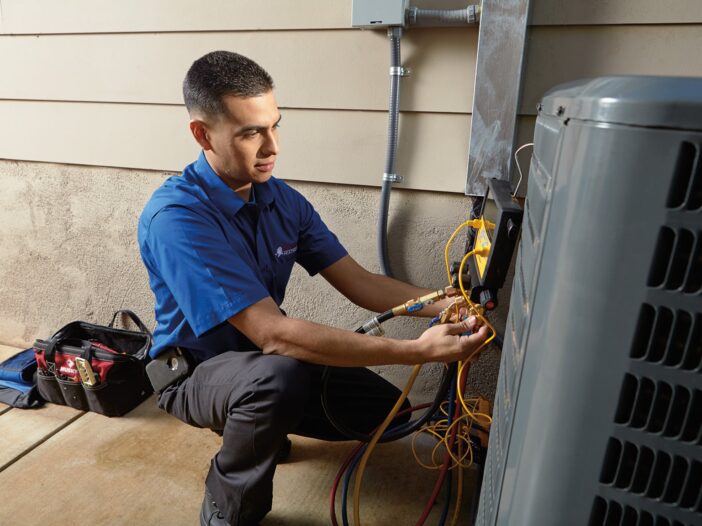
Proper HVAC placement can improve the efficiency, operating costs and service life of an air conditioner. The A/C air handler including the evaporator coil and blower fan are located indoors, usually in a dedicated HVAC closet. The other half of a central AC comprises the condenser coil and fan as well as the system compressor. Its function is to receive compressed heat extracted from the inside of the house, then disperse it into the air.
Here are some guidelines to placing the condenser/compressor unit:
Not Recommended: Attics or Basements
Locating the condenser indoors in an attic or basement is not recommended. Heat dispersed by the unit will radiate into the living spaces, lowering household cooling efficiency and raising operating costs. Also, the indoor air volume is much less than outdoors, which will impact vital air circulation into the coil.
Recommended: Shady Outdoors with Space
Heat naturally flows from a hot zone into a cooler zone more efficiently. Because the function of the condenser coil is to release compressed heat energy into the air, the heat transfer process operates most effectively in a cool location outdoors, out of direct sun. Ideally, the unit should be positioned in shade produced by the house as many hours per day as possible. Keep these in mind for proper circulation:
- Adequate air circulation is also critical to efficient heat dispersal by the outdoor condenser. There should be at least three feet of open space on all sides to ensure proper air intake into the unit. This means spacing the unit sufficiently away from the wall of the house and also away from any thick bushes or other vegetation.
- HVAC placement in direct sun and/or without adequate air circulation also causes the unit’s compressor motor to run hotter, a factor that generally shortens its service life. Because the compressor is the most expensive single component in the system, early failure may require replacement of the entire air conditioner.

